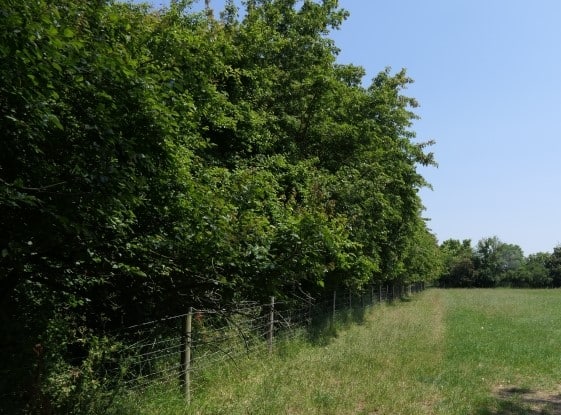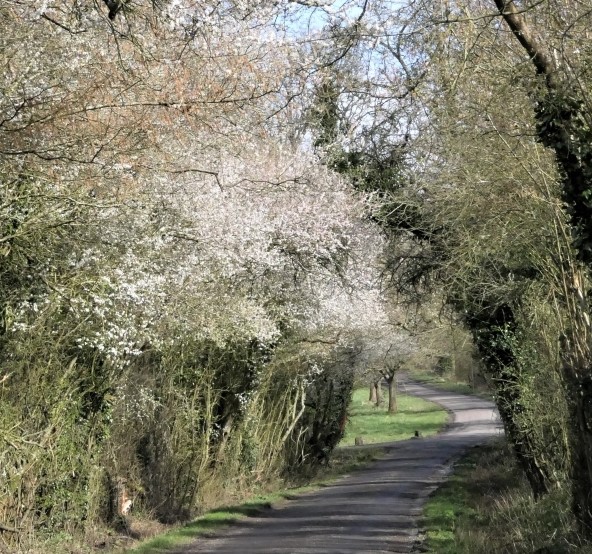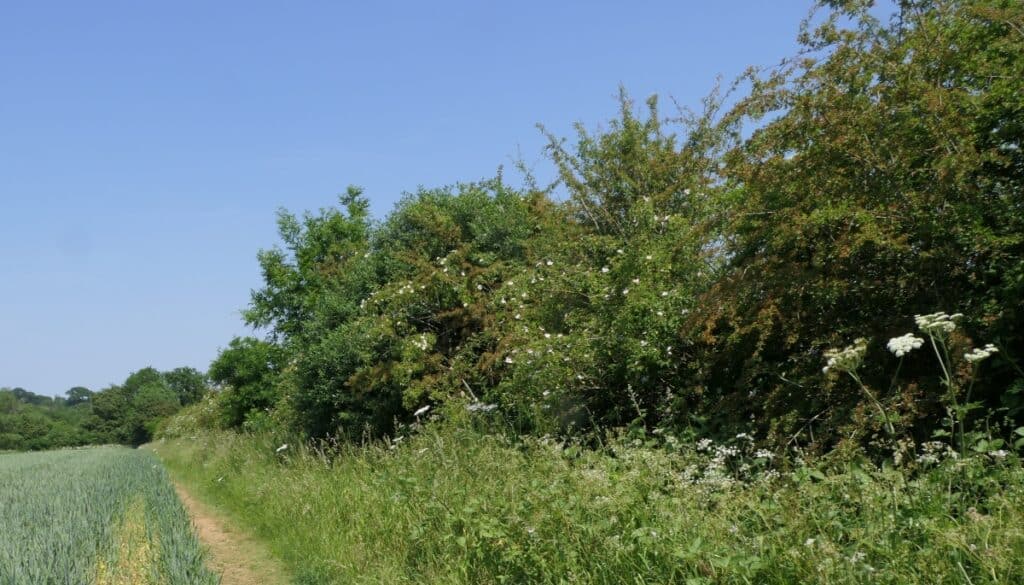The Department of Environment, Food, and Rural Affairs (Defra – or ‘Deathra’ as it’s increasingly known as it piles misery on misery upon England’s badgers) is holding a public consultation on hedgerows. The short online questionnaire takes just minutes to fill out (though that of course depends on some extent to the length of answers you might want to give). The consultation closes just before midnight on the 20th September.
‘Hedgerows’ – a row of bushes, trees, and plants, usually growing along a bank bordering a country lane or between fields – might not seem like something to get particularly excited about, but as we explain in our Protectors page > Hedgerows and the Law, they are the most widespread semi-natural habitat in the UK and support a large diversity of flora and fauna. In fact, hedgerows provide a vital food source for invertebrates, birds and mammals, create corridors between areas that wildlife can travel along in relative safety, and are important for nesting animals.
Whether we realise it or not, much of what we think of as ‘beautiful countryside’ is often dominated by hedgerows, alive with birdsong and filled with flowering plants. But the UK has lost 50% of its hedgerows since World War II (some estimates suggest that’s around 120,000 miles!) and around 60% of the hedgerows we still have aren’t in good condition.

Legislation
In England and Wales what are called ‘important hedgerows’ are protected by The Hedgerows Regulations 1997. They provide important protection by prohibiting the removal of most countryside hedgerows (or parts of them) without first notifying the local planning authority.
A hedgerow is protected under the terms of the Regulations if it meets the following criteria:
Length: A hedgerow is protected if it’s:
- more than 20m long with gaps of 20m or less in its length
- less than 20m long, but meets another hedge at each end
Location: A hedgerow is protected if it’s on or next to:
- land used for agriculture or forestry
- land used for breeding or keeping horses, ponies or donkeys
- common land
- a village green
- a site of special scientific interest
- a protected European site such as a special area of conservation or special protection area
- a local or national nature reserve
- land belonging to the state
Important: A hedgerow is important, and is protected, if it’s at least 30 years old and meets at least one of these criteria:
- marks all or part of a parish boundary that existed before 1850
- contains an archaeological feature such as a scheduled monument
- is completely or partly in or next to an archaeological site listed on a Historic Environment Record (HER), (formerly a Sites and Monuments Record)
- marks the boundary of an estate or manor or looks to be related to any building or other feature that’s part of the estate or manor that existed before 1600
- is part of a field system or looks to be related to any building or other feature associated with the field system that existed before 1845 – you can check the County Records Office for this information
- contains protected species listed in the Wildlife and Countryside Act 1981
- contains species that are endangered, vulnerable and rare and identified in the British Red Data books
- includes woody species and associated features as specified in Schedule 1, Part II Criteria, paragraph 7(1) of the Hedgerow Regulations – the number of woody species needed to meet the criteria is one less in northern counties.
Note that a hedgerow is not protected by the Regulations if it’s in, or marks the boundary of, a private garden.

The Consultation
According to Defra, the consultation is “seeking views on the best way to maintain and improve existing protections, as well as our approach to enforcement…We are also seeking your views on where we should focus our ambitions for future hedgerow protections.”
Given that the trend for this government has been to weaken environmental protections (especially since leaving the EU), and that they have demonstrated repeatedly that they favour farming, development, and infrastructure far above biodiversity, water quality, or improving legislation to protect wildlife, it’s not too cynical to wonder what the changes in this consultation might be leading too.
Questions about whether the buffer zone around important hedgerows should be removed (no, they’re vital for animals and plants that live in or around hedgerows), whether the period of the ‘cutting season’ should be shortened (no, the restrictions cover the period when birds are nesting and legally protected and if anything should be extended as climate warming means birds are nesting earlier in the year), or whether decisions about hedgerow removal should be left with planning authorities (not perfect, but better than individuals unilaterally ripping up hedgerows and wrecking important wildlife habitats), suggest yet more loosening of regulations on behalf of the agricultural industry.
Defra says that the consultation is designed to “help us shape what our requirements should be and what the future of hedgerow protections could look like”. We know full well what that could mean, and it’s not good…
Frankly, if we want such a key habitat to remain protected in any shape or form, as many of us as possible need to spend a few minutes filling this consultation out.
- The consultation can be found at consult.defra.gov.uk/legal-standards/consultation-on-protecting-hedgerows/consultation/intro/. There are just 26 questions, most are Yes or No, and several are asking for feedback about the form itself. It closes just before midnight on the 20th September.

